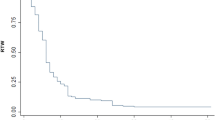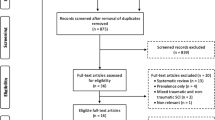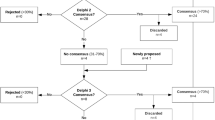Abstract
Study design:
Prospective observational study.
Objectives:
To identify the epidemiological features specific to spinal injuries as a result of an earthquake.
Settings:
Rawalpindi, Pakistan in the months after the 8 October 2005 earthquake.
Methods:
In the month after the earthquake, the one established rehabilitation center was augmented with two makeshift spinal cord centers. Information on mechanism of injury, mode of evacuation, associated injuries was gathered, and a detailed clinical and radiological assessment was performed. Neurological status and functional outcome was determined after 10 weeks.
Results:
Of an estimated 650–750 spinal cord injuries, 187 were admitted to these centers, including 80 men and 107 women with a mean age of 28.3±12.4 years. Injuries occurred while standing in 57.8% of patients. Most (83.4%) who reached the spinal cord center were airlifted. A urinary catheter had been placed before admission in 91.5%. Most of the patients were paraplegic 89.3, with 50.8% incomplete injuries. Fracture or fracture dislocation was present in 70, and 75% underwent spinal fixation. Although pressure ulcers (28.9%) and urinary tract infections (39%) were common, deep venous thromboses (4.8%) and depression (5.8%) were seldom detected. At 10 weeks, 75% were continent or performing intermittent catheterization. There were no deaths and two births.
Conclusion:
After a disaster, evacuation of persons with a spinal cord injury to a specialized center results in low mortality. Response planning for disasters should include early aggressive medical rehabilitation.
Sponsorship:
None.
Similar content being viewed by others
Log in or create a free account to read this content
Gain free access to this article, as well as selected content from this journal and more on nature.com
or
References
EM-DAT. The OFDA/CRED International Disaster Database. Brussels. Center for Research on the Epidemiology of Disasters. c 2006 [created 2006 April 27; cited 2006 April 30]. Available from http://www.em-dat.net/disasters/Visualisation/profiles/natural-table-emdat.php.
Pakistan Earthquake facts and figures sheet – 28 March, 2006. International Federation of Red Cross and Red Crescent Societies c 2005. [cited 2006 Oct 30]. Available from http://www.ifrc.org/Docs/pubs/disasters/pakistanearthquake/factsfigures0306.pdf.
World Health report 2006. World Health Organization. c 2006- [cited 2006 Oct 30]. Available from http://www.who.int/whr/2006/en/index.html.
Ahmad K . Saving lives in the aftermath of Pakistan's earthquake. Lancet 2005; 366: 1423–1424.
Health cluster bulletin. World Health Organization Pakistan. Islamabad. 2006 [cited 30 October 2006]. Available from http://www.whopak.org/pdf/Health_Cluster_Bulletin_South_Asia_Earthquake12.pdf.
Earthquake in Pakistan. Handicap International. UK [updated 2006 Feb 8; cited 2006 April 30] Available from http://www.handicap-international.org.uk/page_518.php.
Maynard FM et al. International standards for neurological and functional classification of spinal cord injury. Spinal Cord 1997; 35: 266–274.
Ambrose G . Disaster medical planning. In: Fulde GWO (ed). Emergency Medicine: The Principles of Practice, 2nd edn. Maclennan and Petty: Sydney 1992, pp 13–19.
Reneses JG, Cabrera RH, Monreno MM . Epidemiological study of spinal cord injury in Spain 1984–1985. Paraplegia 1991; 28: 180–190.
Sorenson FB, Pederson V, Clausen MD . Epidemiology of spinal cord lesions in Denmark. Paraplegia 1990; 28: 105–118.
Thurman DJ, Burnett CL, Jeppson L, Beaudoin DE, Sniezek JE . Surveillance of spinal cord injury in Utah-USA. Paraplegia 1994; 2: 665–669.
Martins F, Freitas F, Martins L, Dartigues JF, Barat M . Spinal cord injuries – epidemiology in Portugal's central region. Spinal Cord 1998; 36: 574–578.
Dincer F, Oflazer A, Beyazora M, Celiker R, Basgoze O, Altioklar K . Traumatic spinal cord injury in Turkey. Paraplegia 1992; 30: 641–664.
Karamehmetoglu SS et al. Traumatic spinal cord injuries in Istanbul, Turkey. An epidemiological study. Paraplegia 1995; 33: 469–471.
Lan C, Lai JS, Chang KH, Jean YC, Lien IN . Traumatic spinal cord injuries in the rural region of Taiwan: an epidemiological study in Hualien county, 1986–1990. Paraplegia 1993; 31: 398–403.
Maharaj JC . Epidemiology of spinal cord paralysis in Fiji: 1985–1994. Spinal Cord 1996; 34: 549–559.
Acton PA, Farley T, Freni LW, Ilegbodu VA, Sniezek JE, Wolleb JC . Traumatic spinal cord injury in Arkansas 1980–1989. Arch Phys Med Rehabil 1993; 74: 1035–1040.
Hart C, William E . Epidemiology of spinal cord injury: a reflection of changes in South African society. Paraplegia 1994; 32: 709–714.
Hoque MF, Grangeon C, Kylie Reed K . Spinal cord lesions in Bangladesh: an epidemiological study 1994–1995. Spinal Cord 1999; 37: 858–861.
Quinones M, Nassal M, Bader KIA, Muraikhi AE, Al Kahlout SR . Traumatic spinal cord injury in Qatar: an epidemiological study. Middle East J Emergency Med 2002; 2: 67–69.
Otom AS, Doughan AM, Kawar JS, Hattar EZ . Traumatic spinal cord injuries in Jordan an epidemiological study. Spinal Cord 1997; 35: 253–255.
Maruo S, Matumoto M . Spinal fractures resulting from the 1995 Great Hanshin Earthquake of the Kobe-Osaka area of Japan. Spinal Cord 1996; 34: 382–386.
Singh R, Sharma SC, Mittal R, Sharma A . Traumatic spinal cord injuries in Haryana: an epidemiological study. Ind J Community Med 2003; 28: 184–186.
Swain A, Grundy D . At the accident. In: Grundy D and Swain A (eds). ABC of Spinal Cord Injury, 4th edn. BMJ Publishing Group: London 2004, pp. 1–4.
Jackson AB, Dijkers M, DeVivo M, Poczateck RB . A demographic profile of new traumatic spinal cord injuries: change and stability over 30 years. Arch Phy Med Rehabil 2004; 85: 1740–1748.
Bernhard M, Gries A, Kremer P, Bottiger BW . Spinal cord injury (SCI) – prehospital management. Resuscitation 2005; 66: 127–139.
Durkin MS, Olsen S, Barlow B, Virella A, Connolly ES . The Epidemiology of urban pediatric neurological trauma: evaluation of, and implications for, injury prevention programs. Neurosurgery 1998; 42: 300–310.
Proctor MR . Spinal cord injury. Crit Care Med 2002; 30: S489–S499.
Reynolds R . Pediatric spinal injury. Curr Opin Pediatr 2000; 12: 67–71.
Augustis M, Abel R, Levi R . Pediatric spinal cord injury in a sub set of European countries. Spinal Cord 2006; 44: 106–112.
Brown RL, Brunn MA, Garcia VF . Cervical spine injuries in children: a review of 103 patients treated consecutively at a level 1 pediatric trauma center. J Pediatr Surg 2001; 36: 1107–1114.
Dickman CA, Zabramski JM, Hadley MN, Rekate HL, Sonntag VK . Pediatric spinal cord injury without radiographic abnormalities: report of 26 cases and review of the literature. J Spinal Disord 1991; 4: 296–305.
Turgut M, Akpinar G, Akalan N, Ozcan OE . Spinal injuries in the pediatric age group: a review of 82 cases of spinal cord and vertebral column injuries. Eur Spine J 1996; 5: 148–152.
Halstead LS . Team care in chronic illness: a critical review of the literature of the past 25 years. Arch Phys Med Rehabil 1976; 57: 507–511.
Illis LS . The case for specialist units. Spinal Cord 2004; 42: 443–446.
Ragnarsson KT . Restorative treatment of persons with spinal cord injury: current trends. J Rehabil Res Dev 1998; 35: 11–14.
Author information
Authors and Affiliations
Rights and permissions
About this article
Cite this article
Rathore, M., Rashid, P., Butt, A. et al. Epidemiology of spinal cord injuries in the 2005 Pakistan earthquake. Spinal Cord 45, 658–663 (2007). https://doi.org/10.1038/sj.sc.3102023
Published:
Issue date:
DOI: https://doi.org/10.1038/sj.sc.3102023
Keywords
This article is cited by
-
Pulse article: survey of neurogenic bladder management in spinal cord injury patients around the world
Spinal Cord Series and Cases (2021)
-
International Spinal Cord Society (ISCoS) database: Asian Spinal Cord Network (ASCoN) Pilot Project [IDAPP]
Spinal Cord Series and Cases (2018)
-
Challenges in comprehensive management of spinal cord injury in India and in the Asian Spinal Cord network region: findings of a survey of experts, patients and consumers
Spinal Cord (2018)
-
Current and future international patterns of care of neurogenic bladder after spinal cord injury
World Journal of Urology (2018)
-
Descriptive study of earthquake-related spinal cord injury in Nepal
Spinal Cord (2017)



